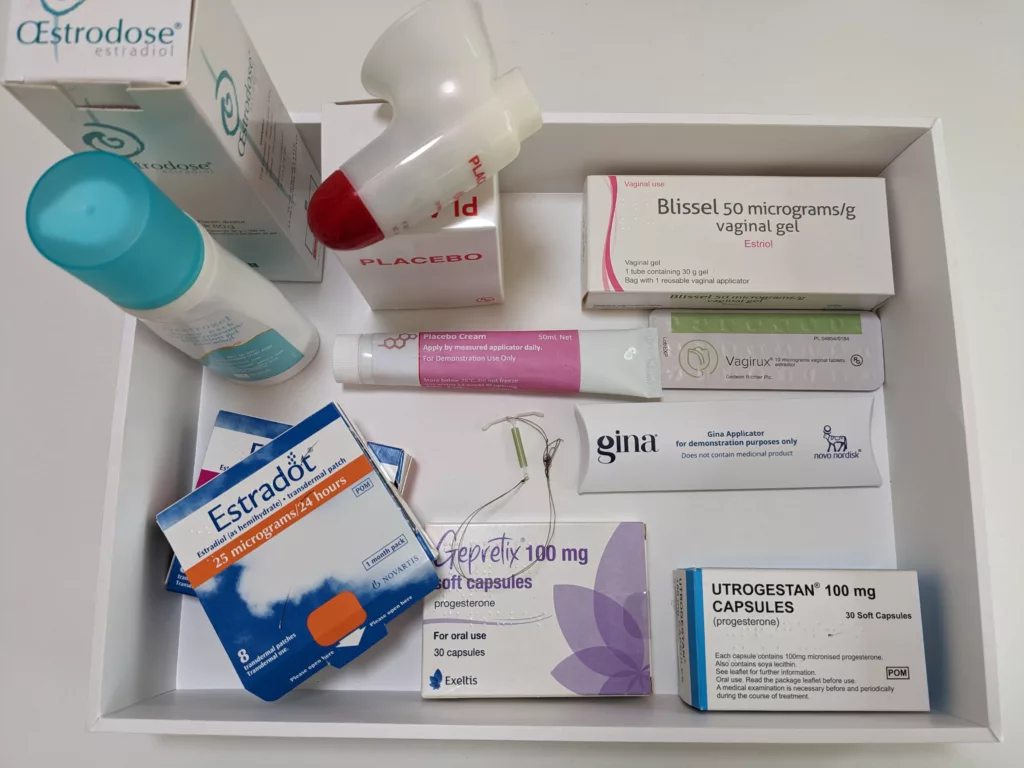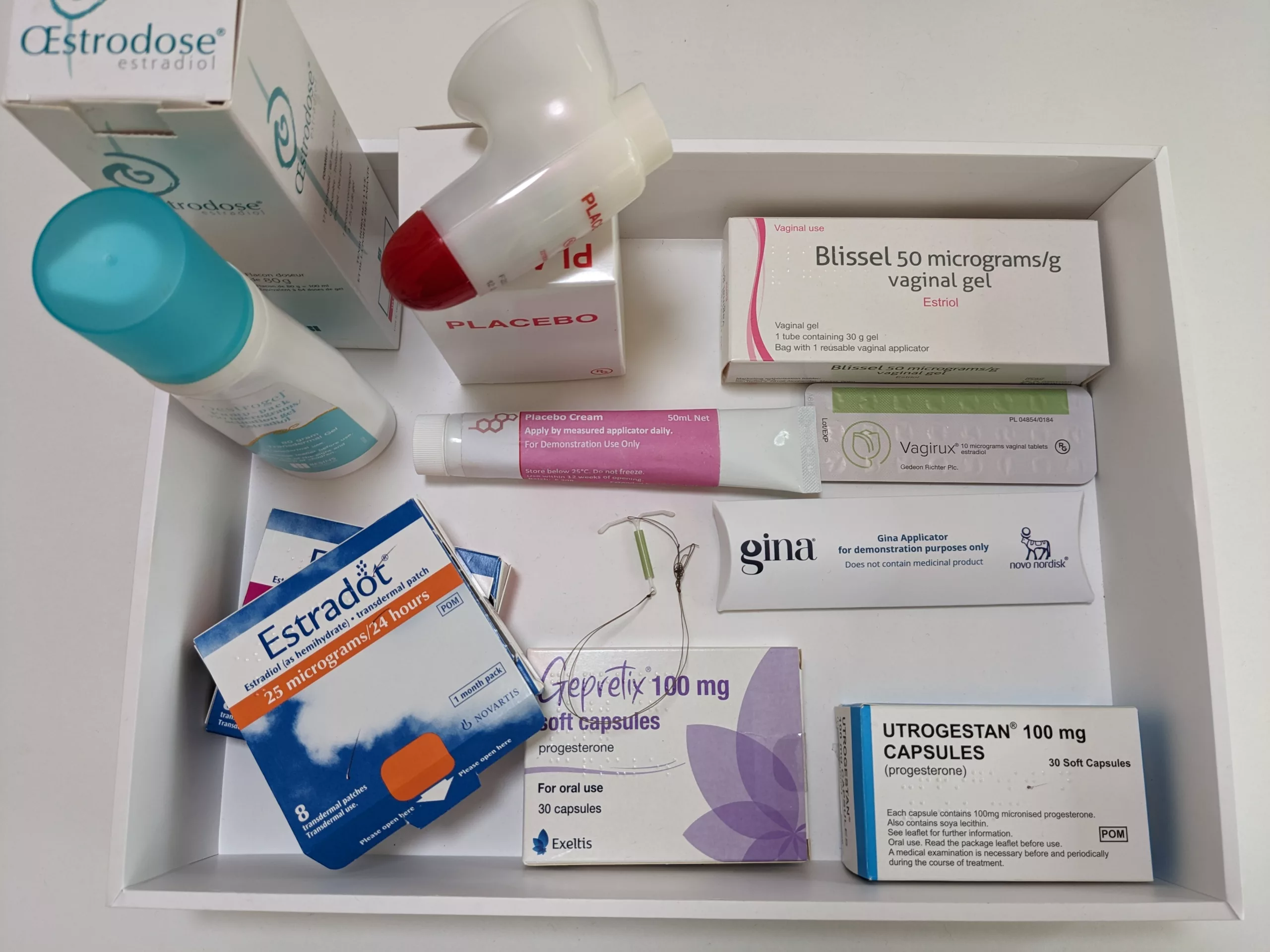With all the different types of HRT available, how do I pick what may suit someone best?
Table of Contents
HRT for everyone?
So full disclosure. I’m a big fan of HRT, I’ve seen it transform lives. People have repeatedly told me how it’s helped them feel like them again, how it’s saved their marriage, their job, even their life. I don’t however believe there is any drug or medical intervention that is always right for all of us. I will never be a menopause specialist who says all women must take HRT but I do strongly believe everyone should have access to accurate information so that they can make their own informed choices.
When it comes to thinking about what type of HRT is best, certain medical factors play a part in decision-making, so understanding your medical history, any medical conditions in your family, and any medications you already take is important.
Personal preference is also key – some of us prefer the convenience of a daily tablet over applying a gel with a separate progestogen, some of us find an oestrogen patch easy to use alongside a hormonal coil, and some of us like the spray. We’re all different, so an individual approach is key.
Oestrogen is the main hormone that helps our symptoms. When oestrogen was initially prescribed it was given alone and there was an increase in cases of cancer of the womb lining (endometrium). Progestogen was prescribed alongside it, and this reduced the womb lining cancer. So progestogen is essential for us to use with oestrogen if we have a womb, to protect the lining. Local oestrogen is oestrogen used around the vulva and vagina, which can be used on its own or in combination with systemic (whole-body) HRT. Testosterone is another important hormone and is sometimes added to oestrogen and progestogen to support libido, especially if the ovaries have been removed or menopause has been experienced very early, where the effect on testosterone can be marked.
If we start HRT when we are still having periods, when we are perimenopausal, we initially use HRT in a cyclical pattern, to replicate the menstrual cycle. Oestrogen is used every day and progestogen usually for 2 weeks out of 4 to give a withdrawal bleed. Over time we can change to a continuous combined HRT where oestrogen and progestogen are used continually. If we go straight on to the bleed-free HRT before our body is ready we tend to get lots of random bleeding, but if our periods have stopped for a year or more when we begin HRT we can go straight onto the continuous combined bleed-free HRT.
HRT tablets
Oral HRT is very convenient, and there is good cycle control (so often less erratic bleeding). Most types contain synthetic hormones, similar to the contraceptive pill. Synthetic progestogens do not suit all people so well and are associated with a slightly higher risk of breast cancer than the body-identical progesterone. Oral HRT is less suitable with certain medical conditions, such as if we have migraine and also increases the risk of blood clots, which is not the case with transdermal HRT. The absolute risk of blood clots with oral HRT though is very small.

Body-identical HRT
Transdermal oestrogen in the form of patches, gel or spray is often used with micronised progesterone, a capsule that you swallow at night. These body-identical hormones are most similar to our natural hormones and suit some people better. If libido is low it can improve more with transdermal oestrogen than with oral oestrogen. Oestrogen patches are applied twice weekly, and gel or spray is applied daily. Micronised progesterone often helps with disturbed sleep, but there can be more erratic bleeding than with synthetic progestogens.
Contraception
The IUS (Mirena) coil can also be used as the progestogen component of HRT, with the added benefits of reducing vaginal bleeding by around 60% and providing reliable contraception.
HRT is not contraceptive unless the IUS is used as part of the regime. Hormonal contraception can also be used by some people in perimenopause to support symptoms.
It’s personal
I can’t tell you what will work for you straight away, it’s like finding the right pair of shoes, some fit better than others even if they’re both a size 6. So there can be some trial and error needed, both with the product and the dose. That can be hard if you’re experiencing lots of symptoms I know, you just want it to work straight away.
Just like with other common medications such as thyroxine, different people need different dosages for the same effect. Different brands can give different absorption levels too. This has been difficult with the supply issues over the past few years, with people needing to swap between different preparations and different brands.
Specialist Menopause Consultations
Here at Rethink I offer specialist menopause consultations. I have the time to work with you to understand your preferences aswell as your medical history, both when initially prescribing HRT, aswell as when tweaking and optimising existing regimes. I can show you the different options, and help you know how to get the most out of each product. If you have any questions about what’s involved in a specialist menopause consult you can email [email protected].
Resources
HRT – types, doses and regimens Women’s Health Concern
Testosterone for women Women’s Health Concern

